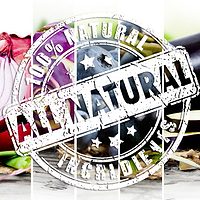Natural or Unnatural—That Is the Lingering Question

Consumers and food industry companies have a unique opportunity to help answer a question that has plagued the U.S. Food and Drug Administration (FDA), the food industry, consumers and courts alike. What food products, if any, deserve the designation “natural?”
In recent years, that question has generated a deluge of consumer class action litigation claiming that the challenged product’s label marked “natural,” “all natural” or “100% natural” misrepresents the true composition of the product’s ingredients and confuses consumers as to the product’s health benefits. The swelling tide of litigation shows no sign of reaching its crest. Rather, the number of labeling disputes are likely to increase as food companies seek to reformulate food products that presently have a host of artificial ingredients in an effort to take advantage of consumer demand for natural, healthful products with simple, identifiable ingredients.
All along, FDA could have taken steps to control the increasing number of disputes over food products labeled “natural.” The Federal Food, Drug and Cosmetic Act grants FDA the authority to promulgate food definitions and standards of food quality, which includes the regulation of nutritional labeling.
In the absence of FDA regulation or more vigorous FDA oversight of labels for food products represented as natural, consumers continue to turn to the courts in an effort to influence food company behavior. But, those court rulings have yet to result in a definitive rule or uniform guidance. To the contrary, some courts have urged FDA to further address the issue. So too have consumer and industry organizations, with disagreement on whether the FDA should define the term “natural” or ban altogether the description of a product as “natural.”
Recent changes to the U.S. food safety laws are intended to prevent adulterated and misbranded food products from reaching the marketplace. The new laws, regulations and efforts—which food companies should be in the process of implementing if they have not done so already—are designed to force food manufacturers and others in the food supply chain to implement preventive controls that will render the farm-to-fork food supply chain sufficiently safe and transparent so that consumers are able to make informed choices among safe food products. The new laws, regulations and efforts also may serve as the catalyst FDA uses to, at long last, regulate the use of the term “natural.”
The new food safety regime would be undermined if labeling requirements were not sufficiently broad and exacting to match the preventive focus and trustworthy and transparent food supply chain that the new system seeks to engender and consumers are demanding. To that end, FDA seeks your—both the food industry and consumers—input on how to regulate claims that a food product intended for human consumption is “natural,” including a product that is genetically engineered or contains ingredients produced through genetic engineering. Specifically, it seeks comment regarding several questions, including:
1. Should FDA define the term “natural” through rulemaking?
2. Should FDA prohibit use of the term “natural” on food labels altogether?
3. Were FDA to define the term “natural,” what foods warrant that label? For instance, should
• Only raw agricultural commodities or single ingredient foods be able to bear a “natural” claim?
• Certain production practices, such as genetic engineering or the use of pesticides, foreclose or at least be a factor in determining use of the term “natural?”
• Certain manufacturing processes, such as drying, salting, canning or pasteurizing, foreclose or at least be a factor in determining use of the term “natural?”
4. Are there data or other information that suggest that consumers associate or confuse the term “natural” with beneficial health consequences?
5. Should the term “natural” have some nutritional benefit associated with it and, if so, what?
In formulating responses to FDA’s questions, it is important for the food industry and consumers alike to keep in mind at least two broad considerations. First, FDA does not consider this issue on a blank slate. Second, practical considerations for food manufacturers render regulation of “natural” labeling claims easier said than done.
This is not the first time FDA has recognized and grappled with the importance of setting rules for use of the term “natural” to describe a food product. In 1991, FDA noted its policy that “natural” means that “nothing artificial or synthetic (including colors regardless of source) is included in, or has been added to, the product that would not normally be expected there.” [See Food Labeling: Nutrient Content Claims, General Principles Petitions, Definition of Terms, 56 FR 60421 at p. 60466 (Nov. 27, 1991)]. But that policy is an advisory opinion; it does not establish a legally binding requirement.
In 1993, in conjunction with rulemaking pursuant to the Nutrition and Labeling Education Act, FDA sought additional comments on use of the term “natural,” but it ultimately declined to issue a formal rule. Instead, FDA concluded that “[n]one of the comments provided FDA with a specific direction” for proper use of the description “natural.” [58 FR 2302 at p. 2407 (Jan. 6, 1993)]. Since then FDA has explained that:
From a food science perspective, it is difficult to define a food product that is “natural” because the food has probably been processed and is no longer the product of the earth. That said, the FDA has not developed a definition for use of the term natural or its derivatives. However, the agency has not objected to the use of the term if the food does not contain added color, artificial flavors, or synthetic substances.[1]
And, as a result of FDA’s reluctance to promulgate a definitive rule on “natural” products, the body of court opinions deciding particular “natural” labeling disputes grows. A few of those courts have looked to FDA for guidance in an effort to forgo usurping FDA authority. But, as recently as 2014, FDA declined to enter the fray, asserting, among other reasons, its desire to hear from and consider the interests of the various stakeholders concerning this complex issue. As well, FDA cited its devotion of resources to other priorities, including implementation of the preventive-focused Food Safety Modernization Act (FSMA). Now, however, apparently recognizing that efforts to provide a transparent marketplace where consumers are able to make informed choices amongst safe food products would be undermined absent further consideration of the content of food labels, the underpinnings of FSMA appear to be key ingredients in a renewed attempt by FDA to formulate a recipe for more accurate labeling of “natural” products.
Practically, however, change will not be easy for many food manufacturers, especially those who rely on increasingly complex, and often global, food supply chains. That complexity presents a substantial hurdle a food company must overcome in order to verify the source of ingredients, let alone whether an ingredient was processed or produced in a manner that allows the company to represent it as natural. FSMA requires supply-chain-applied controls as part of a company’s food safety plan where necessary to control potential hazards. A company that seeks to market “natural” foods will have to take similar measures if it wants to ensure the “natural” nature of ingredients sourced, regardless of whether those ingredients pose a food safety risk. To achieve the requisite transparency that goal entails, a company will need to, among other steps, carefully conduct due diligence in preparation for the supply relationship, thoughtfully negotiate and precisely draft the supply agreement and vigilantly manage and oversee the supply partner. In short, a food company that seeks to market “natural” food products will have to continually ask itself and take the requisite steps needed to answer this critical question—“With whom are we dealing?”
Food companies and consumers continue to have important opportunities to shape the evolving rules that will govern food company operations and the transparency of the food supply chain. Given the importance of and complexity underlying “natural” claims, FDA has extended until May 10, 2016 the time in which interested parties may submit input. More information on the questions FDA poses and instructions on how to submit comments can be found on FDA’s website.[2]
John T. Shapiro, Esq., is a partner and member of the Food Industry Team at Freeborn & Peters LLP (Chicago).
References
1. www.fda.gov/aboutfda/transparency/basics/ucm214868.htm.
2. www.federalregister.gov/articles/2015/11/12/2015-28779/use-of-the-term-natural-in-the-labeling-of-human-food-products-request-for-information-and-comments.
Looking for a reprint of this article?
From high-res PDFs to custom plaques, order your copy today!






